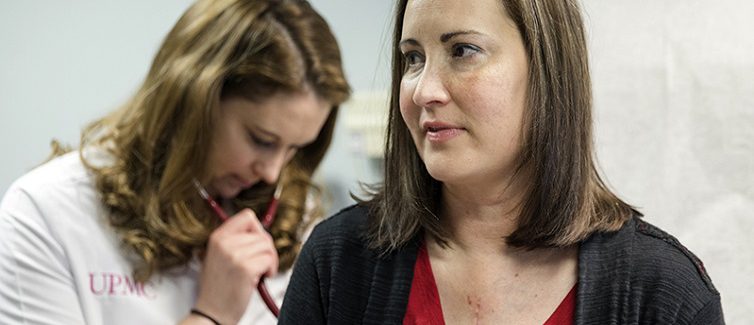For those that do not follow on facebook, here is the interview my surgeon and I did just before I was released after transplant.
Breakthrough in Heart Transplants Is a Game-Changer For Patients
This last concern is no surprise: The fact that Michelle is alive and able to hunt and go to baseball games is due to the transplanted heart that saved her life in October 2017. Her gift came after a grueling four-month hospital stay with daily monitoring and management of her fragile condition.
A Different Donor
Stories like Michelle’s are not that unusual. What is different is that Michelle opted to accept a heart from a donor who had died with Hepatitis C antibodies in his system. And Michelle is doing just fine.
Most people know Hep C as a serious blood-borne viral disease that can cause liver damage, liver cancer, and death.
It is transmitted by IV drug use, tattooing, and other ways that blood can pass from one person to another. Until screening began 1992, transplanted blood and organs posed an infection risk as well.
But today there’s good news about Hep C: Thanks to a new generation of antiviral drugs, the cure rate is 95 percent. And progressive hospitals like UPMC, where Michelle received her treatment, are taking the first steps in using this breakthrough to access a larger pool of donor hearts with the hope of narrowing the chronic and life-threatening shortage that plagues transplantation.
RELATED: How You Can Donate Life: Different Kinds of Organ Donation
Balancing the Risks
“It’s a case of balancing risks,” says Christopher Sciortino, MD, the UPMC transplant surgeon who performed Michelle’s operation. “With the new drugs, the risk of dying from Hep C is very small, and you balance that against Michelle’s risk of dying from congenital heart disease, which was much, much higher.”
Michelle was born with Transposition of the Great Arteries, a congenital condition that prevented her blood from carrying a normal amount of oxygen to her body.
She had her first heart surgery in 1977, when she was just shy of 3 years old, and grew up knowing that her diseased heart would always be a factor in her life. “I’ve had countless procedures, tests, pacer/ICDs, and medications my whole life long,” she says.
Eventually the condition took its toll. She was diagnosed with heart failure in 2009 and approved for transplant in 2016.
A Challenging Match
“Michelle was a challenging transplant match,” says Dr. Sciortino. Multiple surgeries and blood treatments over her lifetime had sensitized her immune system and reduced the pool of donor hearts that her body would tolerate with minimal rejection.
When her information was being entered into the donor registry, Michelle discussed the risks of a Hep C donor heart with Dr. Sciortino and a second doctor. After these discussions she decided that the benefit of getting a heart sooner was worth the small risk of dealing with Hepatitis C and opted into the pool of Hepatitis C donors.
“I think this is an important thing we’re doing,” Dr. Sciortino says. “That’s why UPMC has established a conservative research protocol that helps us do it in the safest way possible. I want to provide my patients with whatever advantage they can get as long as it’s safe.”
The seriousness of Michelle’s condition put her at the top of the recipient list. Still, she waited in the hospital as the weeks and months went by without an acceptable donor heart becoming available. Finally, one came.
It was positive for Hepatitis C antibodies, but not for the disease itself, which meant it was significantly less likely to put Michelle at risk for infection. “Honestly, if not for the Hep C, this heart would have gone to somebody else, and Michelle would have had to keep on waiting,” says Dr. Sciortino.
Taking Charge of Her Own Health
Michelle, who is in good health for someone with heart disease, recovered and went home a little more than a week after the surgery—infection free. “It was the combination of a healthy patient, a great team, and a good heart,” says Dr. Sciortino. “Michelle is a shining example of how well somebody can do when they take ownership of their health care. She knew her labs, knew her charts, and took charge of her health.”
UPMC, where organ transplantation was greatly advanced in the 1980s by the pioneering research of Dr. Thomas E. Starzl, is one of a handful of hospitals with the resources and experience to perform this kind of transplant operation. Dr. Sciortino expects the research opportunities and the quality of the patient experience to take another giant step with the completion of the UPMC Heart and Transplant Hospital in 2020.
“As in any hospital, the people are what make this a special place,” he says. “The new facility will have a whole new care environment that will add on top of that.”


